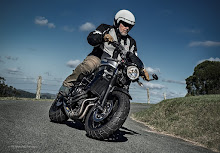>>
Don't get too hung up on length and speed. Because, as you say, all other things aren't equal here. Longer hull at the same beam and hull shape also means increased wetted surface and more drag. It also requires more materials to build, so its heavier and that takes more energy to accelerate.
Even ignoring that, the relationship between hull speed and length is proportional to the square root of the waterline length not the actual waterline length. Note: Waterline length not overall length. A long boat with less than it's design load sits up out of the water and has a shorter waterline length than the same boat loaded. The difference in hull speed between a 580 and a 530 would be less than a quarter of a knot or 0.5 km/h. For both boats it would be between 9 and 10 km/hr and thats a very fast pace to maintain cruising any distance. Unless you're racing you probably won't notice the difference.
>>
(10FEB11, John Anderson_SeaKayakForum.com )
John's comments are similar to my findings.
In paddling groups I have observed that paddlers left behind occasionally blame their shorter kayak for the lack of speed and them not being able to keep up. However the pace is usually around 6-7 Km/h at best.
Some paddlers are convinced that if they had a longer kayak they would be able move faster.
It would be interesting to see what would really happen if they tried the longer kayak. Chances are they would be actually slower, if they could not improve their paddling technique.
Obviously things are different if a paddler can bring his/her kayak to hull speed (maximum speed that their particular kayak can achieve). Most sea kayaks hit "the wall" at much higher speeds than at recreational paddling pace.

One must really push hard to eventually feel the kayak being unable to go any faster.
At slower speeds (Club outing pace) a shorter kayak will create less resistance and therefore be easier to paddle.
Here are some resistance stats for known sea kayaks hulls.
(Posted by: wilsoj2 on Nov-24-09 2:44 AM (EST) www.paddling.net )
Here are some drag figures for 7 boats from Sea Kayaker from 2 to 4.5 knots (2.3 to 5 mph) listed from most drag to least at each speed:
at 2 knots:
Valley Rapier 20 = .97
Epic Edundrance 18 = .97
NDK Explorer = .94
Chatham 16 =.93
Foster Legend = .9
Avocet = .9
Nordkapp LV = .9
at 3 knots:
Valley Rapier 20 = 2.04
Epic Edundrance 18 = 2.03
Foster Legend = 2
NDK Explorer = 1.96
Chatham 16 = 1.93
Avocet = 1.92
Nordkapp LV = 1.88
at 4 knots:
Chatham 16 = 3.89
Avocet = 3.74
Foster Legend = 3.7
NDK Explorer = 3.63
Epic Edundrance 18 = 3.55
Nordkapp LV = 3.52
Valley Rapier 20 = 3.45
at 4.5 knots:
Chatham 16 = 5.58
Avocet = 5.4
NDK Explorer = 5.25
Nordkapp LV = 5.24
Foster Legend = 4.9
Epic Edundrance 18 = 4.73
Valley Rapier 20 = 4.45
The drag figures given are calculated assuming flat water.
It seems that the shorter kayaks have less resistance than the long ones, at recreational/Club speed.
I also find intriguing the emphasis put on maneuverability and stability observations from paddlers' reports on a given kayak.
They vary incredibly.
I hear/read comments like: "the kayak is very tippy" or "the kayak is very stable" for the same very kayak.
So what gives? how can a person really find out what are the characteristics of a kayak?
I believe that stability is difficult to quantify.
Sure there are scientific measurements taken and published for most kayaks out there (Sea Kayaker Magazine being a great source) but those numbers are much harder to interpret and to come to a conclusion than the simple measurements of speed.
What one person finds stable other might find tender.
 Photo: Rio Mistico Kayaks_used with permission
Photo: Rio Mistico Kayaks_used with permission
The biggest factor in objectively assessing a kayak's stability is the paddler's skill level.
A novice might find a narrow round hulled kayak very unstable while a proficient kayaker will pronounce it "rock solid". Needless to say that quality seat time in any kayak will increase one's skill level. It certainly did for me:
here
Being able to roll also adds an incredible sense of security and a kayak that used to be regarded as tippy suddenly becomes OK. Before I could roll proficiently I would be very wary of narrow kayaks.
A paddler's weight is probably the other most deciding factor on a perceived kayak stability. I however find that more weight doesn't equate to more stable. Gear or ballast in a kayak will increase stability but a paddler's weight might not. There is a marked difference between the weight distribution between men and women; the latter being advantaged by a lower centre of gravity that in terms equates to a more stable kayak.
I notice girls having an easier time balance bracing a kayak than guys.

Being top heavy and having broad muscly shoulders does actually make it more difficult.
Last but not least: the paddling conditions.
Some crafts are excellent in calm waters but become a bit of a handful in following seas.
Regular readers of this blog will also know that I find ruddered kayak less stable in following seas where the rudder no longer can function to aid directional stability. A kayak that can be controlled by the paddler's body and paddle stroke is usually a more stable kayak, in conditions.
While listening to reviews is often beneficial in the quest of selecting a new kayak, some reviews/observations are so terribly subjective that give the researcher little help. What most reviewers forget is to state their weight and height. What really can not be quantified however is the skill level of the reviewer, to then be able to draw any conclusions from the review.

